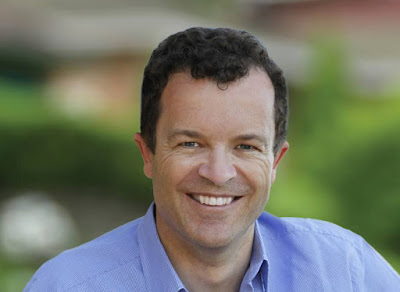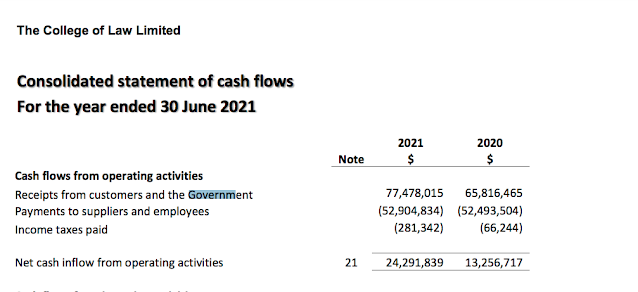TAFE funding cut of $326 Million (and more) can be restored by re-directing $50 Million a year paid to the NSW legal establishment's College Of Law
by Ganesh Sahathevan
As reported earlier by this writer, some $40-50 Million a year in FEE HELP is probably being misallocated by the Federal Government to Sydney's College Of Law, as result of failure by the regulator, the New South Wales Legal Profession Admission Board, to address issues of poor course content that are more than a decade old.
It has also been shown that FEE HELP financed revenues which are meant to finance the Professional Legal Training Programme, which is compulsory for anyone wishing to be admitted to practise law in NSW, now appear to have been diverted to a number of foreign ventures.
Meanwhile the Federal Government has been happy to slash $326 Million from TAFE funding, despite the shortage of skilled workers.
In short, the Government is happy to fund entry into an already over-supplied market for lawyers, but unwilling to provide funds for training in areas where there are not enough workers.
Dan Tehan needs to explain his misplaced spending priorities.
As reported earlier by this writer, some $40-50 Million a year in FEE HELP is probably being misallocated by the Federal Government to Sydney's College Of Law, as result of failure by the regulator, the New South Wales Legal Profession Admission Board, to address issues of poor course content that are more than a decade old.
It has also been shown that FEE HELP financed revenues which are meant to finance the Professional Legal Training Programme, which is compulsory for anyone wishing to be admitted to practise law in NSW, now appear to have been diverted to a number of foreign ventures.
Meanwhile the Federal Government has been happy to slash $326 Million from TAFE funding, despite the shortage of skilled workers.
In short, the Government is happy to fund entry into an already over-supplied market for lawyers, but unwilling to provide funds for training in areas where there are not enough workers.
Worse, it does so despite complaints about the course content, and relevance.In fact, the PLT was once only ever an alternative to articles, but has over the years evolved into a Graduate Diploma despite the course content being whittled down.
In attempt to justify the post graduate standing of what is essentially a vocational course the College's Academic Director, Lewis Patrick has informed this writer (who was once a student at the College,and completed his PLT):
In attempt to justify the post graduate standing of what is essentially a vocational course the College's Academic Director, Lewis Patrick has informed this writer (who was once a student at the College,and completed his PLT):
Please note that in assessing your work experience journal the College is not assessing the quality of your work experience, but rather the quality of your reflections on that experience.
The PLT 's tutorial component lasts approximately three months. A work experience component of 75 days must also be completed. The PLT would normally be considered the equivalent of a TAFE vocational training
course, or a Graduate Certificate at best.Instead TEQSA recognises it as a Graduate Diploma and it qualifies for FEE HELP funding (while PLT students incur the debt it is the taxpayer who funds the cash outflow, and carries the risk, but without compensation for the risk).
Dan Tehan needs to explain his misplaced spending priorities.
END
Federal government funding for TAFE and training was cut by $326 million last year, a new report says.
The report, released on Wednesday by the National Centre for Vocational Education Research, reveals federal funding of the sector dropped 11 per cent compared to 2017.
Labor education spokesperson Tanya Plibersek said the cut had contributed to a worsening national skills crisis.
"Is it any wonder our nation has a shortage of plumbers, hairdressers, bricklayers, panelbeaters and other critical workers?" she said.
"By locking Australians out of education the Liberals are locking Australians out of jobs."
While the federal government decreased funding to $2.8 billion in 2018, the states and territories increased their funding by $191 million to $3.4 billion.
Combined, TAFE and training funding totalled $6.1 billion in 2018 - a 2.1 per cent decrease in nominal terms compared to 2017.
Ms Plibersek said the $326 million federal cut could pay for an extra 32,000 trainees or apprentices.
She said there are now more people dropping out of training programs than finishing them, and more than two million people out of work or looking for more hours.
"Now we know why Scott Morrison isn't training these people for jobs in industries facing skills shortages: because he's starving TAFEs and training of funding," Ms Plibersek said.
© AAP 2020



Comments
Post a Comment